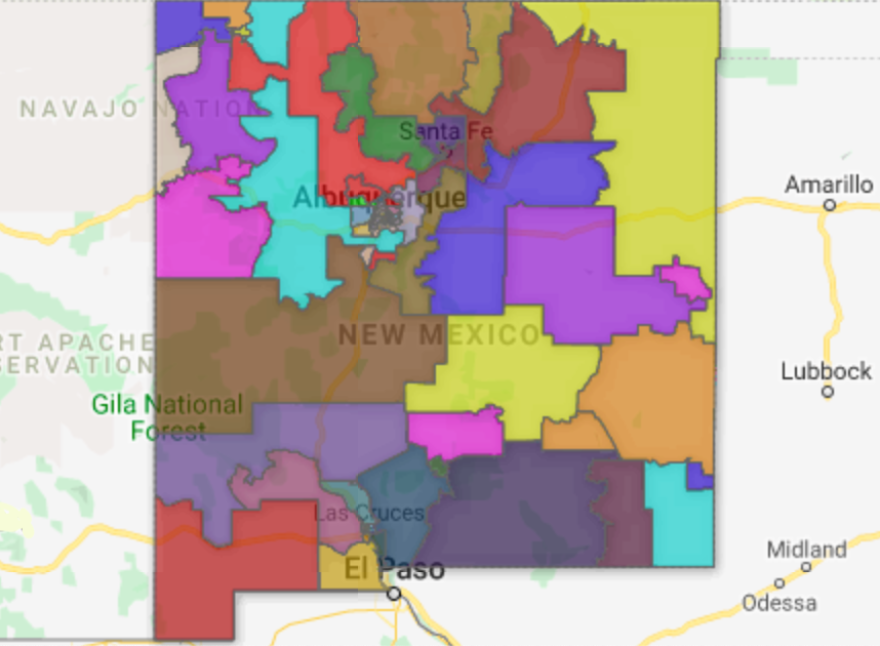Next year’s census will set the stage for redistricting in 2021. A new report examines the history of drawing electoral districts in New Mexico and what state lawmakers could do to ensure a transparent and fair process.
Author Gwyneth Doland is a local journalist and instructor in the University of New Mexico’s Communication and Journalism department. She did the analysis for New Mexico In Depth, and found our redistricting system has structural weaknesses that allow personal and partisan motives to distort the process.
The state took steps to make the redistricting process more transparent last time around, Doland told KUNM’s Elaine Baumgartel, by holding meetings across the state and making proposed district maps available online.
Doland: But what every single person I talked to told me – people who are in the legislature now, people who have retired, people who have been out of it for a long time, going back to the 80’s – they all told me this is what happens: They come into this special session which is usually in the fall of the year after the census. They come in, they go into caucus and the Democrats decide what they want to do. They’ve been in power most of the time, so then they tell the Republicans, alright, this is what we’re doing. And then they fight it out a little bit, but it all happens in these private meetings that are not open to the public. Then they bring their plans out and vote on them, and that’s it. Noone’s there, noone’s watching. They haven’t been webcast in the past, so, they effectively get to do whatever they want.
KUNM: What are some of the other things that other states have done to try to make their process more fair and more transparent that either isn’t happening here in New Mexico, or isn’t required, yet?
Doland: There are a lot of things. One thing to keep in mind that several national experts said to me is that every state’s political culture is totally different from the next. There is no one size fits all solution. A lot of states who have taken steps here have gone to a commission structure and it takes it out of the lawmakers’ hands, and you get rid of that incumbent issue, at least.
KUNM: This [incumbency issue] is where lawmakers who are making the redistricting decisions can basically write the lines of their own district to ensure that they for sure will be re-elected by cherry-picking communities that they know support their agenda or their party.
Doland: The way everybody who’s been through this talks about it is, ‘Legislators choose their constituents, not the other way around.’ In other states, they’ve also done things like giving some part of the map drawing to non-partisan staff, like our Legislative Council Service. Have them draw the maps and then just have the lawmakers vote on them. Justin Levitt, who’s a national expert on this, he told me the single most important thing you can do if you don’t do a commission is to ban favoring one party or one candidate and to ban dis-favoring, or trying to put a hit on, one party or one candidate, and that takes care a lot of the partisanship and incumbent protection.
KUNM: Are lawmakers going to do any of these things during the session in 2020? That would be the opportunity, they could put some of these solutions in place so that it would then have an impact on the 2021 redistricting process.
Doland: They could. It’s definitely a thing that is possible, people are talking about it a little more. I’ve talked to some folks in community organizing groups who are a little more motivated than we’ve seen in the past. I will say, the pressure is really just not there. It’s not there from the public and we have single party rule. We will almost certainly go into redistricting with Democrats controlling the [state] House, Democrats controlling the [state] Senate and a Democrat in the governor’s office. That leaves very little pressure to be more fair.
***
Editor's Note: The Redistricting NM 2021 report was funded by the Thornburg Foundation, which is also a supporter of KUNM.




